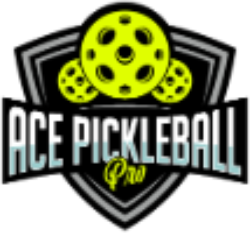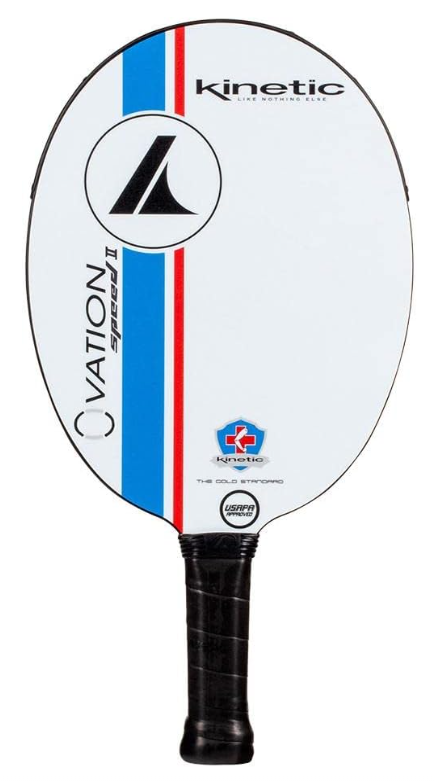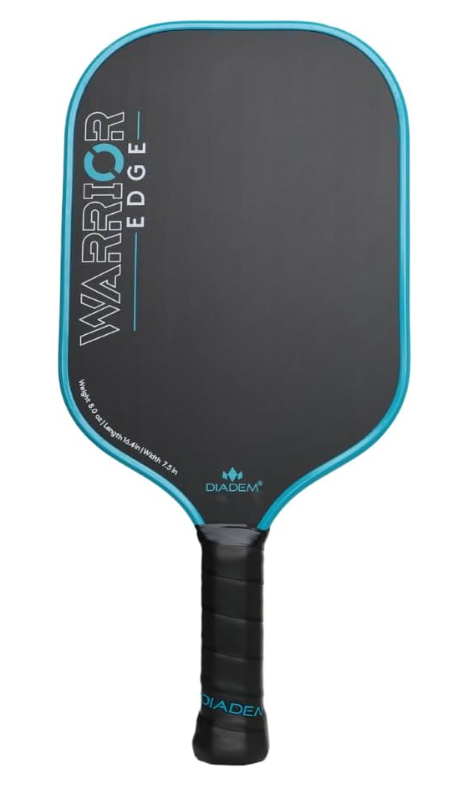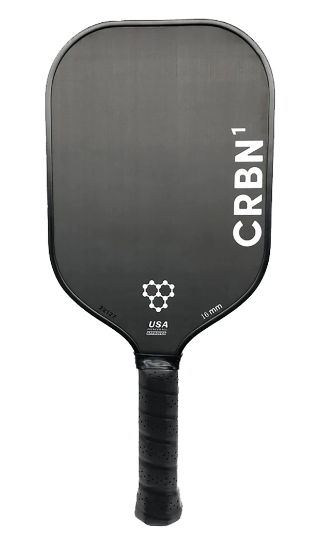Top 3 Pickleball Paddles Scientifically Aligned with Rotator Cuff Relief
A data-backed guide for injury-conscious performance
If your shoulder aches after every smash or serve, it’s not just wear and tear — it’s your gear. For players with rotator cuff pain, the right paddle isn’t a luxury. It’s a necessity.
This guide breaks down the best pickleball paddles for shoulder health, backed by biomechanics, sports medicine, and real-world results.
Want smarter gear picks, injury-proof drills, and swing tips? Start at the Ace Pickleball Pro homepage.
✅ Why Rotator Cuff Health Matters in Paddle Selection
The rotator cuff consists of four small muscles that stabilize the shoulder. Repetitive swings — especially overhead serves — can lead to tendinitis, bursitis, and even full-blown tears (Franciscan Health).
The right paddle reduces:
- Torque on your shoulder
- Vibration that causes inflammation
- Tension transferred up your arm
Want to swing smarter, not harder? Here’s how to improve your accuracy without extra force.
Introducing the Shoulder Stress Index (SSI)
We rate paddles on our custom Shoulder Stress Index (SSI) — from 1.0 (least stress) to 5.0 (highest) — based on:
| Factor | Why It Matters |
|---|---|
| Weight | Lighter = less shoulder torque |
| Core Material | Foam/polymers absorb joint-damaging vibration |
| Grip Ergonomics | Prevents overgripping and hand fatigue |
| Sweet Spot | Bigger sweet spot = less force needed |
| Balance | Neutral balance = fewer awkward motions |
ProKennex Kinetic Pro Speed II
SSI: 1.6 / 5 – Vibration Killer with Rehab-Level Relief
Alt: Best Pickleball Paddle for Rotator Cuff Pain – ProKennex Kinetic Pro Speed II
“I was ready to quit because of shoulder pain. This paddle saved my game.”
The ProKennex Kinetic Pro Speed II is built around breakthrough kinetic energy technology. Tungsten micro-beads inside the paddle shift on impact — actively dispersing shock before it hits your joints. It’s used by pros recovering from rotator cuff surgery and chronic tendinitis.
✅ Pros:
- Unmatched vibration dampening
- Ergonomic grip for relaxed play
- Proven relief for injured or recovering players
❌ Cons:
- Premium price
- Slight learning curve due to kinetic tech
Diadem Warrior Edge
SSI: 1.8 / 5 – Plush, Powerful, and Built for Recovery
Alt: Diadem Warrior Edge Paddle for Shoulder Injury Recovery
“My shoulder used to hurt after every match. Now? It’s like playing on clouds.”
The Diadem Warrior Edge has a foam-injected polymer core that softens impact and adds comfort without killing performance. Its etched carbon face keeps control tight — ideal for players recovering from tendinitis or early-stage RC tears.
✅ Pros:
- Soft impact feel with solid spin
- Balanced for finesse and reach
- Great for medium to mild pain relief
❌ Cons:
- Less power for deep drives
- Slightly muted “pop” feel
CRBN¹ 16mm Pickleball Paddle
SSI: 2.0 / 5 – Thick Core, Soft Feel, Built to Save Shoulders
Alt: CRBN 1 Pickleball Paddle for Rotator Cuff and Tendon Relief
“It took 15 minutes to realize this paddle would let me play longer — and pain-free.”
The CRBN¹ (Carbon One) is a favorite among players dealing with joint stress, particularly shoulder and elbow strain. The 16mm thick polypropylene honeycomb core helps absorb impact, while the raw T700 carbon fiber face provides grip, spin, and shock diffusion.
Its balanced feel and soft-touch design make it one of the best paddles for players managing chronic pain or those focused on injury prevention.
✅ Pros:
- Thick core = elite vibration dampening
- Balanced weight (7.8–8.1 oz) for effortless swings
- Trusted by competitive players and PTs alike
❌ Cons:
- Not the best for raw power hitters
- Carbon face can feel “muted” if you like a loud pop
👉 Check the CRBN¹ 16mm Paddle →
SSI Comparison Table
| Paddle | Weight | Core Material | Vibration Control | Grip Comfort | SSI Score |
|---|---|---|---|---|---|
| ProKennex Pro Speed II | 7.9 oz | Kinetic Polymer + Tungsten | 🔥🔥🔥 | Cushioned Ergonomic | 1.6 |
| Diadem Warrior Edge | 7.8 oz | Foam Polymer | 🔥🔥 | Tacky Soft Grip | 1.8 |
| CRBN 1 16mm | 7.9–8.1 oz | Polypropylene + Carbon Face | 🔥 | Elongated, Ergonomic | 2.0 |
| Paddle | Best For | Weight | Core Type | Buy |
|---|---|---|---|---|
| ProKennex Pro Speed II | Shoulder rehab & post-injury use | 7.9 oz | Kinetic Polymer + Tungsten | Buy → |
| Diadem Warrior Edge | Tendinitis relief & soft play | 7.8 oz | Foam-Injected Polymer | Buy → |
| CRBN 1 16mm | Prevention & long sessions | 7.9–8.1 oz | Thick Poly Core + Raw Carbon | Buy → |
Which Paddle Should You Choose?
| Player Type | Pick This Paddle | Why It Works |
|---|---|---|
| Recovering from serious injury | ProKennex Pro Speed II | Best-in-class shock absorption |
| Dealing with mild or chronic soreness | Diadem Warrior Edge | Plush feel with excellent control |
| Healthy, but want to stay that way | CRBN 1 16mm | Thick core + carbon face = pain prevention combo |
Want a breakdown of power vs. control paddles?
Expert PT Insight
“When rehabbing rotator cuff injuries, paddle selection is key. I recommend lightweight paddles with dampening cores and cushioned grips to reduce stress during repeated swings.”
— Dr. Nicole Surdyka, DPT, CSCS, Sports Physical Therapist
✅ In alignment with UT Health Austin’s Injury Prevention Guide
Evidence-Based Gear Tips
- ✅ Go light (<7.8 oz): Prevents long-term fatigue and stress buildup
- ✅ Use foam/polymer cores: Backed by Cal Poly Biomechanics Study
- ✅ Grip matters: A well-fitted grip reduces overgripping and joint tension
- ✅ Carbon = power + control, Fiberglass = finesse (Explore materials)
Technique Tips to Reduce Shoulder Strain
| Tip | Why It Helps |
|---|---|
| Shorter backswings | Reduces joint wear |
| Core-driven strokes | Offloads shoulder entirely |
| Use underhand serves | Avoids overhead strain |
| Two-handed backhands | Balances swing force |
| Relaxed grip | Prevents stress up the chain |
Shoulder-Safe Paddle FAQs
Q: Should I avoid all heavy paddles?
A: Generally, yes — but some heavier paddles (like the ProKennex) use tech to minimize shock.
Q: Can lightweight paddles still generate power?
A: Yes — modern face materials like carbon fiber maintain power without requiring high force.
Q: What grip size is ideal?
A: Use the smallest grip that feels secure — it reduces overgripping and joint strain.
Q: Are these paddles beginner-friendly?
A: Absolutely. They’re great for players focused on form, joint safety, and finesse.



